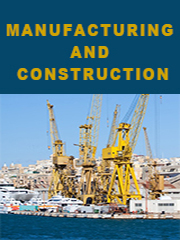The global Food Robotics market was valued at US$ 496 million in 2022 and is projected to reach US$ 889.8 million by 2029, at a CAGR of 8.7% during the forecast period. The influence of COVID-19 and the Russia-Ukraine War were considered while estimating market sizes.
The USA market for Global Food Robotics market is estimated to increase from USD million in 2022 to reach USD million by 2030, at a CAGR during the forecast period of 2023 through 2030.
The China market for Global Food Robotics market is estimated to increase from USD million in 2022 to reach USD million by 2030, at a CAGR during the forecast period of 2023 through 2030.
The Europe market for Global Food Robotics market is estimated to increase from USD million in 2022 to reach USD million by 2030, at a CAGR during the forecast period of 2023 through 2030.
The use of robots is becoming more and more widespread. Even in many traditional industrial fields, people are trying to make robots work instead of humans, and the same is true in the food industry.
This report aims to provide a comprehensive presentation of the global market for Food Robotics, with both quantitative and qualitative analysis, to help readers develop business/growth strategies, assess the market competitive situation, analyze their position in the current marketplace, and make informed business decisions regarding Food Robotics. This report contains market size and forecasts of Food Robotics in global, including the following market information:
- Global Food Robotics Market Revenue, 2018-2023, 2024-2029, ($ millions)
- Global Food Robotics Market Sales, 2018-2023, 2024-2029, (Units)
- Global top five Food Robotics companies in 2022 (%)
Europe has the largest global export quantity and manufacturers in food robotics market, while the Japan is the second sales volume market for food robotics in 2018.
We surveyed the Food Robotics manufacturers, suppliers, distributors and industry experts on this industry, involving the sales, revenue, demand, price change, product type, recent development and plan, industry trends, drivers, challenges, obstacles, and potential risks.
Total Market by Segment:
Global Food Robotics Market, by Type, 2018-2023, 2024-2029 ($ Millions) & (Units)
Global Food Robotics Market Segment Percentages, by Type, 2022 (%)
- Low Payload
- Medium Payload
- High Payload
Global Food Robotics Market, by Application, 2018-2023, 2024-2029 ($ Millions) & (Units)
Global Food Robotics Market Segment Percentages, by Application, 2022 (%)
- Palletizing
- Packaging
- Processing
- Other
Global Food Robotics Market, By Region and Country, 2018-2023, 2024-2029 ($ Millions) & (Units)
Global Food Robotics Market Segment Percentages, By Region and Country, 2022 (%)
- North America (United States, Canada, Mexico)
- Europe (Germany, France, United Kingdom, Italy, Spain, Rest of Europe)
- Asia-Pacific (China, India, Japan, South Korea, Australia, Rest of APAC)
- The Middle East and Africa (Middle East, Africa)
- South and Central America (Brazil, Argentina, Rest of SCA)
Competitor Analysis
The report also provides analysis of leading market participants including:
- Key companies Food Robotics revenues in global market, 2018-2023 (Estimated), ($ millions)
- Key companies Food Robotics revenues share in global market, 2022 (%)
- Key companies Food Robotics sales in global market, 2018-2023 (Estimated), (Units)
- Key companies Food Robotics sales share in global market, 2022 (%)
key players include:
- ABB
- FANUC
- KUKA
- Kawasaki
- Yaskawa
- Staubli
- Universal Robots
- DENSO
- Omron Adept Technologies
- SIASUN
Outline of Major Chapters:
Chapter 1: Introduces the definition of Food Robotics, market overview.
Chapter 2: Global Food Robotics market size in revenue and volume.
Chapter 3: Detailed analysis of Food Robotics manufacturers competitive landscape, price, sales and revenue market share, latest development plan, merger, and acquisition information, etc.
Chapter 4: Provides the analysis of various market segments by type, covering the market size and development potential of each market segment, to help readers find the blue ocean market in different market segments.
Chapter 5: Provides the analysis of various market segments by application, covering the market size and development potential of each market segment, to help readers find the blue ocean market in different downstream markets.
Chapter 6: Sales of Food Robotics in regional level and country level. It provides a quantitative analysis of the market size and development potential of each region and its main countries and introduces the market development, future development prospects, market space of each country in the world.
Chapter 7: Provides profiles of key players, introducing the basic situation of the main companies in the market in detail, including product sales, revenue, price, gross margin, product introduction, recent development, etc.
Chapter 8: Global Food Robotics capacity by region & country.
Chapter 9: Introduces the market dynamics, latest developments of the market, the driving factors and restrictive factors of the market, the challenges and risks faced by manufacturers in the industry, and the analysis of relevant policies in the industry.
Chapter 10: Analysis of industrial chain, including the upstream and downstream of the industry.
Chapter 11: The main points and conclusions of the report.
